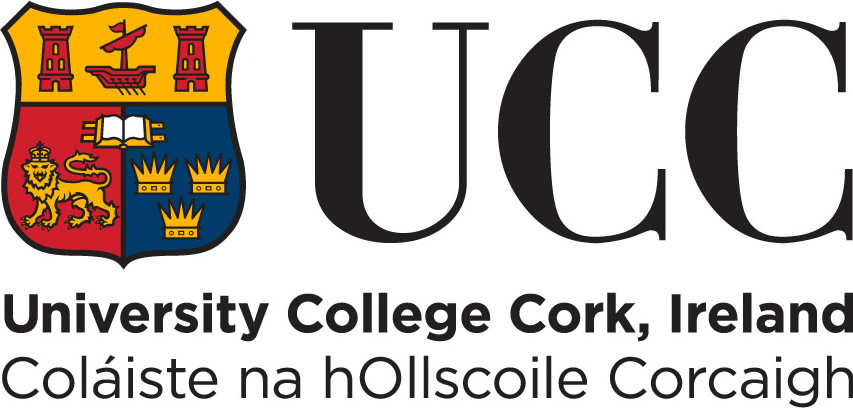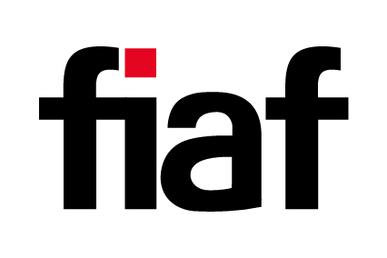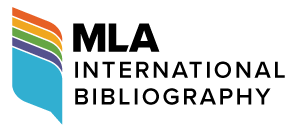Authoring Hal Ashby: The Myth of the New Hollywood Auteur, by Aaron Hunter. Bloomsbury Academic, 2016, 240 pages.
Nicholas Godfrey
Aaron Hunter’s Authoring Hal Ashby: The Myth of the New Hollywood Auteur is one of a growing number of titles aiming to reassess the origins and constitution of the New Hollywood canon. Hunter’s subject is Hal Ashby, a director who worked with many of the New Hollywood era’s key themes and personnel throughout his career yet has never comfortably fit into canonical accounts of the period. Central to Hunter’s argument is his claim that Ashby’s marginality to historical accounts of the New Hollywood stems from the director’s personal disavowal of the auteur mantle, choosing instead to continually praise the contributions of his collaborators. In fact, this has cemented Ashby’s reputational standing as an “actor’s director” (34). Many of his best-known films of the 1970s remain celebrated first and foremost for their performances: Jack Nicholson in The Last Detail (1973), Warren Beatty in Shampoo (1975), Peter Sellers in Being There (1979). Ashby’s name itself is less prominently associated with the New Hollywood period than several of his collaborators: producer/stars Beatty and Jane Fonda, screenwriter Robert Towne, cinematographer László Kovács. Thus, he is less often included in the ranks of the era’s auteurs than he is dismissed as a director without a style. In Hunter’s reckoning, Ashby’s films do not receive detailed consideration in histories of the period as he is not an auteur, and the auteur paradigm has historically determined which films of the New Hollywood are deserving of serious inquiry. Hunter challenges the auteurist claim by tracing the recurring stylistic and thematic concerns that span Ashby’s career. More ambitiously, Hunter also scours productions histories, personal correspondences and interviews to elucidate Ashby’s creative processes, and the importance he placed on the contributions of his many collaborators. In so doing, Hunter challenges the centrality of the figure of the solitary director exercising total control to the New Hollywood mythology. Hunter prefers to position Ashby as one author amongst many, who equally valued the contributions of his collaborators, and often brought out their best work. Ultimately, Hunter’s project is to “elucidate more clearly Ashby’s role in the authorship of his films, why that role has been undervalued, and how a deeper appreciation for that role will serve to expand current conceptions of the New Hollywood era and the filmmakers who worked within it” (42).
Hunter’s book builds on recent scholarship on multiple authorship in film, particularly C. Paul Sellors’s Film Authorship: Auteurs and Other Myths and Alan Lovell and Gianluca Sergi’s Making Films in Contemporary Hollywood. While Hunter also acknowledges the earlier scholarship of the likes of Geoffrey Nowell-Smith and Christian Metz, who drew on Roland Barthes to situate the possibility of multiple authorship being embedded within audience reception, Hunter eschews poststructuralist approaches and instead locates his notion of multiple authorship in the material processes of production. Hunter is careful to emphasise that his notion of multiple authorship extends beyond just collaboration, and instead refers to a series of authors bringing their own distinctive authorial contributions to bear on the cinematic text.
Hunter sets the scene for his appraisal of Ashby’s career with a brief but thorough overview of the industrial changes that swept through Hollywood from the mid-1960s, permitting the rise of the kinds of films that would later be celebrated as major entries in the New Hollywood canon. Against this timeline, Hunter charts Ashby’s entry into the film industry—firstly as an assistant editor on films directed by such major figures of Classical Hollywood as George Stevens and William Wyler. But it was through his association with Norman Jewison, for whom Ashby edited The Russians Are Coming, the Russians Are Coming (1966) and In the Heat of the Night (1967), that Ashby began to develop two sensibilities that would prevail throughout his directorial career: a direct engagement with contemporary politics through film, and a deep personal distrust of producers. Indeed, both characteristics were at play in Ashby’s directorial debut, The Landlord (1970), a project which he secured when Jewison stepped down as director, but stayed on as producer, offering his editor the director’s chair. Hunter provides a sharp overview of the prescient racial politics of this largely unheralded film, while exploring the myriad problems which Ashby encountered when the film’s production company, the Mirisch Company, exhibited little faith in the director’s soundtrack choices and cinematographer Gordon Willis’s use of natural light (which would later be celebrated, earning him his nickname “The Prince of Darkness” for his similar work on The Godfather [Francis Ford Coppola, 1972]). Ultimately, United Artists’ lack of confidence in The Landlord led them to mismarket it as a raunchy comedy. The studios would also exhibit their lack of faith and understanding of Ashby’s subsequent films Harold and Maude (1971) and The Last Detail (1973), fomenting mutual distrust and suspicion between the director and his future producers.
Against this historical context, Hunter builds a two-pronged argument about Ashby’s claim to film authorship. First of all, Hunter analyses the thematic and stylistic continuities that appear throughout Ashby’s body of work. The former is visible in Ashby’s commitment to selecting projects that showcase progressive political concerns (from African-American housing and economic inequality in The Landlord to the plight of disabled Vietnam War veterans in Coming Home [1978]), and the presence of marginal protagonists trying to find their place in society. Hunter also identifies recurring formal characteristics, such as the use of long shots in moments of heightened emotion. Most intriguingly, Hunter undertakes detailed formal analysis of complex editing strategies in Ashby’s films as director, notably his intricate use of crosscutting, which fragments and dilates the passage of cinematic time in the climaxes of Harold and Maude and The Last Detail respectively. This deceptively complex formal strategy is further realised in Coming Home, where Ashby uses crosscutting to not only juxtapose parallel cinematic spaces, but also differentiated flows of cinematic time in musical montage sequences scored by transdiegetic music—that is, music that moves into and out of the diegesis throughout the sequence. Hunter also briefly discusses Ashby’s enthusiastic adoption of new technologies throughout his career, from the debut outing of the Steadicam in the Woody Guthrie biopic Bound for Glory (1976) to the use of Dolby sound technology in his Rolling Stones concert film Let’s Spend the Night Together (1982).
Taken in sum, these observations might represent grounds for Ashby’s reappraisal as a sophisticated director of the New Hollywood period. However, Hunter’s analysis of thematic and stylistic continuities solidifies his claim that Ashby is one of the authors on his films. He follows this with a close analysis of Ashby’s collaborations with his creative teams, building a theory of multiple authorship wherein “each potential author is able to bring her own set of goals and artistic principles to the production of the utterance [the cinematic text], and it is through the collective nature of the production that those goals and principles congregate into one collective set of intentions” (122). This theory is most clearly articulated in Hunter’s case study on Being There, which grounds its formal analysis in the circumstances of production, beginning with author Jerzy Kosiński adapting the screenplay from his own novel. Unhappy with this draft, Ashby guided his frequent film editor Robert C. Jones on a series of rewrites that would ironically restore the narrative to one closer to Kosiński’s original novel. Hunter laments that Jones’s significant contributions to the film’s authorship have been continually overlooked due to the fact that they went uncredited on the final film. Hunter scours Being There’s production history for instances in which cinematographer Caleb Deschanel, editor Don Zimmerman, and star Peter Sellers left their own creative marks on the film, most notably in the development of the film’s messianic concluding image, which did not appear in the shooting script.
Hunter grounds his claims in diligent archival research, drawing heavily from Ashby’s papers in the Margaret Herrick Library at the Academy of Motion Picture Arts and Sciences. Hunter’s research yields some fascinating anecdotes: the transcripts from rehearsals for the climactic confrontation in Coming Home reveal how the lengthy improvisations helped Bruce Dern to understand his character’s motivations, Ashby having given his actors the space in which to explore and discover their characters, thus bringing their own creative contributions to bear upon the filmmaking process. And indeed, Hunter outlines how Ashby’s subsequent reputation as an “actor’s director” became central to his arbitration proceedings against the producers of his final film, 8 Million Ways to Die (1986), when the final cut was removed from his control. As with Hunter’s earlier point about Jones’ uncredited screenplay contributions to Being There, the critical dismissal of Ashby’s uneven late career films suggests within prevailing critical orthodoxies, notions of authorship often reside in assumptions determined by the credits on the final film, with little attention paid to the actual process of production.
Hunter’s book is a timely reappraisal of the retrospective taxonomy of the New Hollywood canon. By analysing not only Ashby, but the importance of his many collaborations across his career, Hunter effectively “re-image[s] New Hollywood as an era of multiple authors—directors, writers, cinematographers, editors, set designers, and more—collaborating in endeavours to create works of artistic merit” (140). Rather than giving us an antiauteurist screed or a deflation of the New Hollywood mythology, Hunter’s book deepens our appreciation for the thematic complexity, stylistic adventurousness, and the wealth of talent collaborating in this vibrant moment of film history.
References
1. Barthes, Roland. “The Death of the Author.” Auteurs and Authorship: A Film Reader, edited
by Barry Keith Grant, Blackwell Publishing, 2008, pp. 97–100.2. Being There. Directed byHal Ashby, United Artists, 1979.
3. Bound for Glory.Directed by Hal Ashby, United Artists, 1976.
4. Coming Home. Directed by Hal Ashby, United Artists, 1978.
5. 8 Million Ways to Die. Directed byHal Ashby, TriStar Pictures, 1986.
6. The Godfather.Directed by Francis Ford Coppola, Paramount Pictures, 1972.
7. Harold and Maude. Directed byHal Ashby, Paramount Pictures, 1971.
8. In the Heat of the Night. Directed by Norman Jewison, United Artists, 1967.
9. Kosiński, Jerzy. Being There, Black Swan, 1970.
10. The Landlord. Directed byHal Ashby, United Artists, 1970.
11. The Last Detail. Directed byHal Ashby, Columbia Pictures, 1973.
12. Let’s Spend the Night Together. Directed byHal Ashby, Embassy Pictures, 1982.
13. Lovell, Alan, and Gianluca Sergi. Making Films in Contemporary Hollywood. Hodder
Arnold,2005.14. Metz, Christian. “History/Discourse: A Note on Two Voyeurisms.” Theories of Authorship:
A Reader, edited by John Caughie, Routledge & Kegan Paul, 1981, pp. 225–32.15. Nowell-Smith, Geoffrey. “Six Authors in Pursuit of The Searchers.” Theories of Authorship:
A Reader, edited by John Caughie, Routledge & Kegan Paul, 1981, pp. 221–5.16. Russians Are Coming, the Russians Are Coming, The. Directed by Norman Jewison, United
Artists,1966.17. Sellors, C. Paul. Film Authorship: Auteurs and Other Myths. Wallflower, 2010.
18. Shampoo. Directed byHal Ashby, Columbia Pictures, 1975.
Suggested Citation
Godfrey, N. (2018) Review of Authoring Hal Ashby: The Myth of the New Hollywood Auteur, by Aaron Hunter. Alphaville: Journal of Film and Screen Media, 15, pp. 152-155. https://doi.org/10.33178/alpha.15.11.
Nicholas Godfrey is a lecturer in Screen and Media at Flinders University in South Australia, and the author of The Limits of Auteurism: Case Studies in the Critically Constructed New Hollywood.









